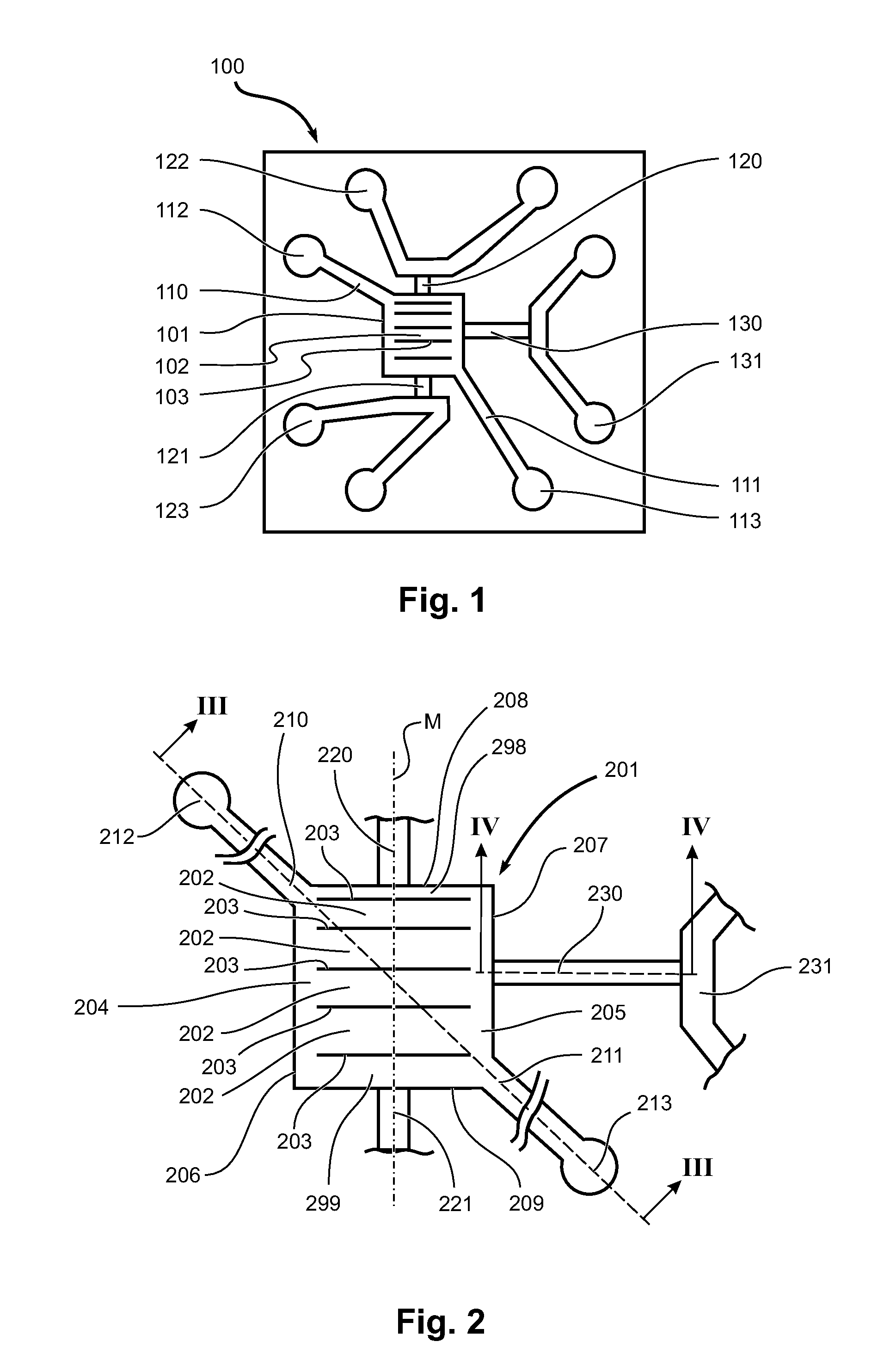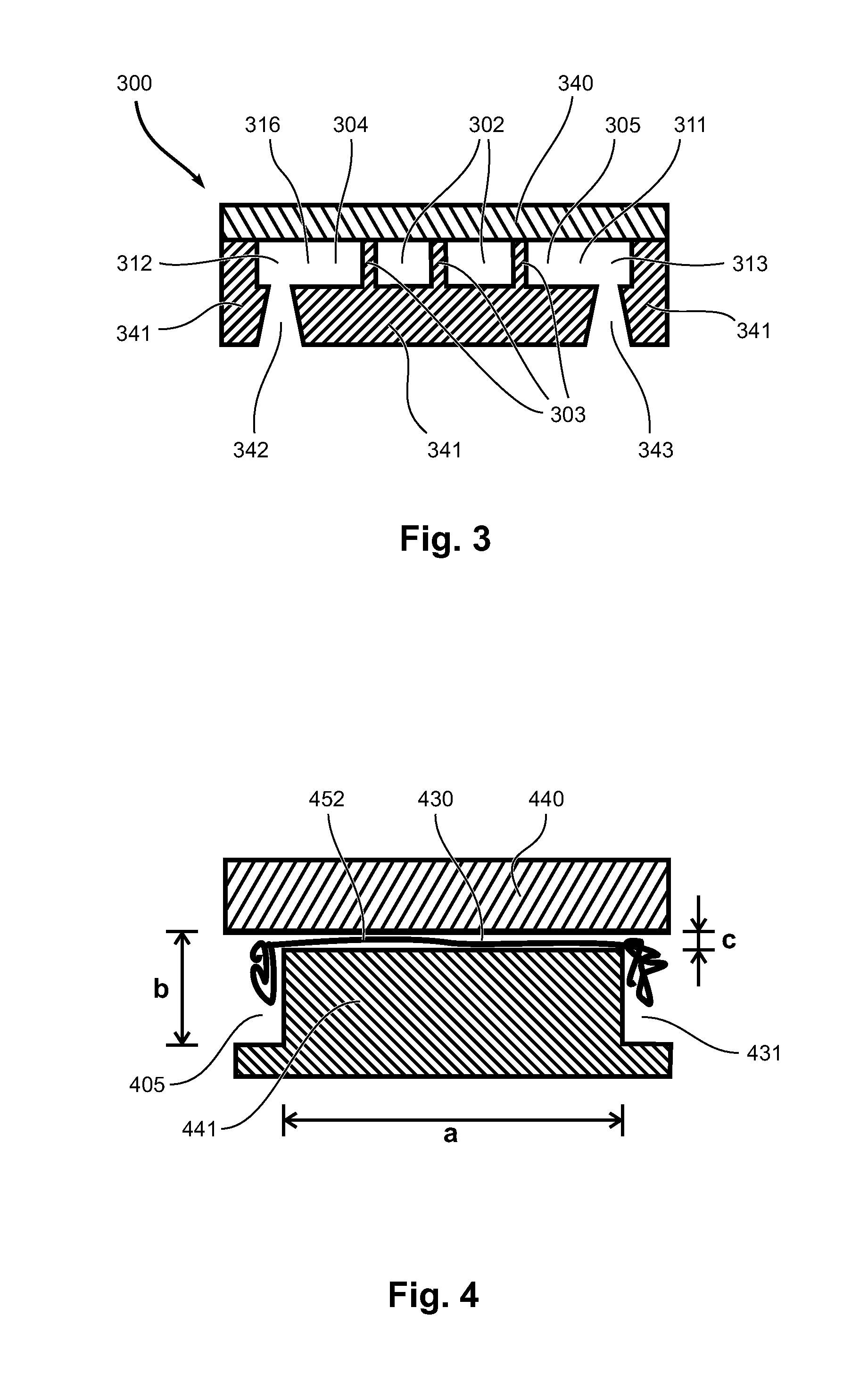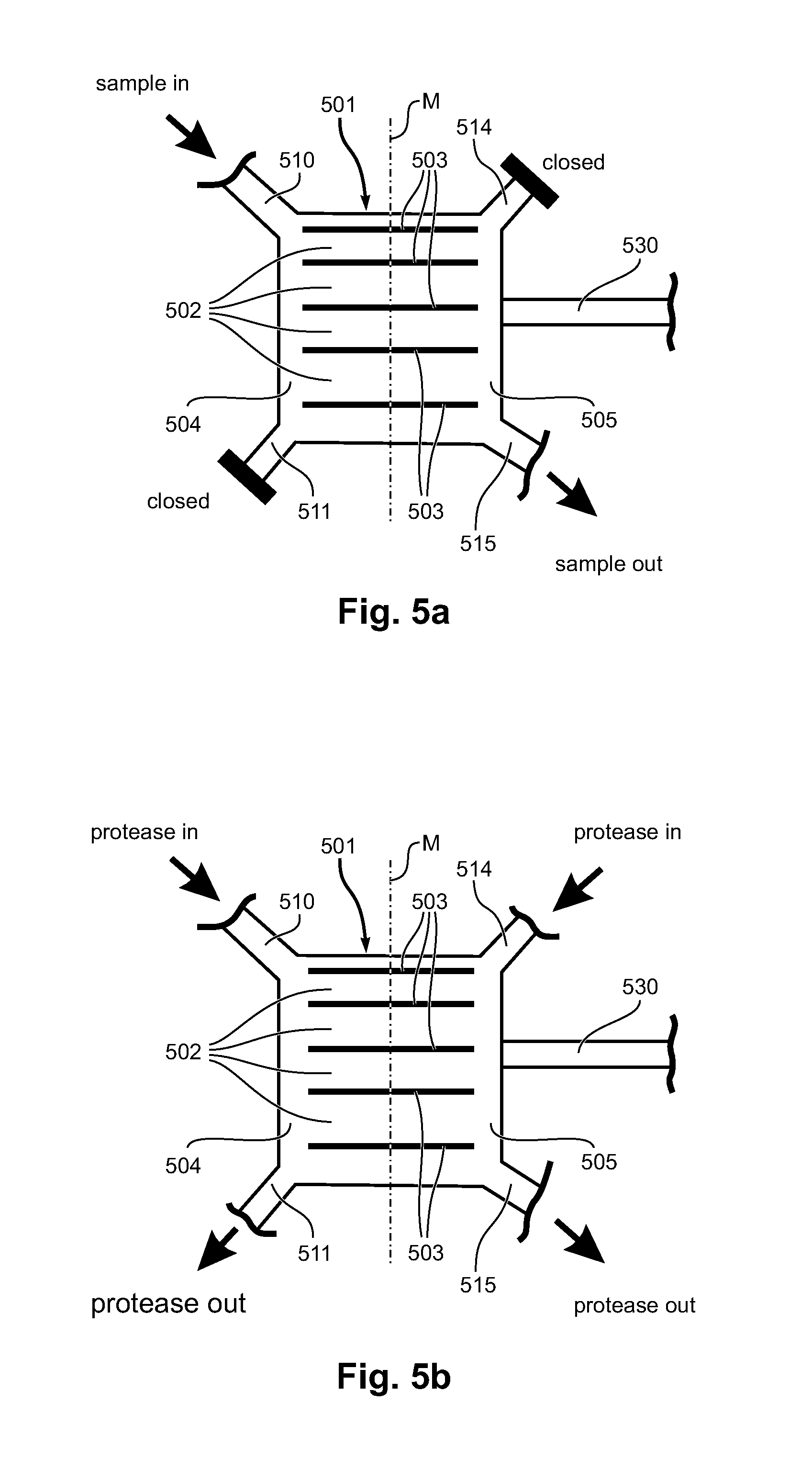Microfluidic device and method for processing of macromolecules
- Summary
- Abstract
- Description
- Claims
- Application Information
AI Technical Summary
Benefits of technology
Problems solved by technology
Method used
Image
Examples
example
[0086]Referring to FIGS. 6a-6d, 7, 8 and 9, in the following, an example is given for the design, fabrication and use of a device for handling and releasing DNA from metaphase chromosomes. FIG. 6 gives a schematic view of the device used in the example and its operation. FIGS. 7-9 show micrographs visualising different aspects of the operation of the device. The device design of the example aims to immobilize a single metaphase chromosome in an isolation zone through which reagents can be exchanged by diffusion enabling proteins to be digested. The DNA thus extracted can then be shunted out of the isolation zone into a nanoslit for stretching.
[0087]FIG. 6 shows schematically a sequence of operational states for a device according to another embodiment of the invention. The device of FIG. 6 has, apart from the number of reaction channels 602, the same configuration of the reaction chamber region, and in particular of the first inlet / outlet channels 610, 611, the second inlet / outlet c...
PUM
| Property | Measurement | Unit |
|---|---|---|
| Flow rate | aaaaa | aaaaa |
| Concentration | aaaaa | aaaaa |
| Electrical resistance | aaaaa | aaaaa |
Abstract
Description
Claims
Application Information
 Login to View More
Login to View More - R&D Engineer
- R&D Manager
- IP Professional
- Industry Leading Data Capabilities
- Powerful AI technology
- Patent DNA Extraction
Browse by: Latest US Patents, China's latest patents, Technical Efficacy Thesaurus, Application Domain, Technology Topic, Popular Technical Reports.
© 2024 PatSnap. All rights reserved.Legal|Privacy policy|Modern Slavery Act Transparency Statement|Sitemap|About US| Contact US: help@patsnap.com










